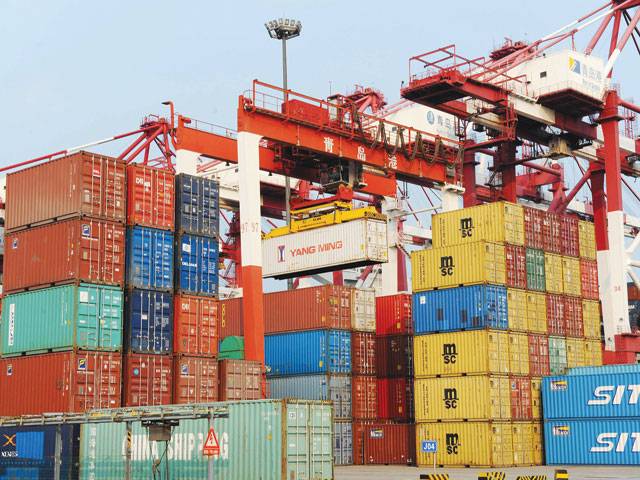BEIJING - China’s trade surplus widened to $26.7 billion in August as imports registered a surprise fall, data showed Monday, fuelling expectations of a new round of stimulus measures.
The figures, which came a day after downbeat industrial data, highlight waning strength in the world’s second-largest economy, as the broader global slowdown and the European debt crisis drag on exports.
Overseas shipments increased 2.7 percent year-on-year in August to $178 billion, the General Administration of Customs said in a statement on its website. Imports fell 2.6 percent to $151.3 billion.
The increase in exports in August outpaced the one percent gain registered in July and was also slightly better than the 2.5 percent increase forecast in a survey of economists by Dow Jones Newswires, though it is far below the kind of growth China has experienced in recent years.
The decline in imports, meanwhile, came as those economists had expected a 3.4 percent rise and follows two straight months of slowing growth.
Gross domestic product in China, a key engine of the global economy, grew 7.6 percent in the second quarter through June, its worst performance in three years. The government is targeting full-year expansion of 7.5 percent this year, though that is well below the 9.3 percent recorded in 2011 and the 10.4 percent in 2010.
The decline in imports “reinforces our view that China is heading to an economic hard-landing”, Shen Jianguang of Mizuho Securities Asia said in a report, adding more stimulus is likely soon.
Monday’s figures are the latest in a string of weak data that has confirmed a deepening slowdown in China’s economy.
Official data Sunday showed industrial output growth weakened in August to its slowest pace in more than three years.
Production increased just 8.9 percent year-on-year — the lowest since a similar rise of 8.9 percent in the depths of the global economic crisis in May 2009.
Lu Ting, China Economist at Bank of America Merrill Lynch, also said that the worsening situation is likely to tip Chinese authorities towards further action.
“With a worsening growth outlook and muted inflation pressure, we expect the government to take more action to support growth,” he said in a report.
Lu added that such efforts will likely focus on improvements to urban infrastructure and increasing the supply of land as well as two additional cuts by the central bank to reserve ratio requirements for banks and the easing of some curbs on lending.
China has already taken steps this year to stimulate growth by cutting interest rates twice in quick succession and slashing the amount of funds banks must keep in reserve as methods to stimulate lending.
But a slight acceleration announced Sunday in consumer price inflation, which rose 2.0 percent in August, has led to speculation the People’s Bank of China will be reluctant to slash borrowing costs again soon.
“The possibility of cutting interest rates within this year has greatly decreased, though there is still room to lower reserve ratios,” the China Securities Journal, a state-run newspaper, said in a commentary Monday.
The government is now also pushing other measures to bolster the economy. State media reported Friday the approval of an infrastructure package worth more than 1.0 trillion yuan ($158 billion), involving 55 projects ranging from subway lines to highways.
China carried out a massive 4.0 trillion yuan fiscal stimulus package in the wake of the global financial crisis in 2008.
Chinese shares rose 0.34 percent on Monday to 2,134.89.
Friday, April 19, 2024
China trade surplus widens to $26.7 b

PM Shehbaz Sharif to personally monitor Saudi investment
3:39 PM | April 19, 2024
Polling begins in first phase of India’s marathon general elections
3:31 PM | April 19, 2024
Pakistan deeply disappointed by UNSC dissensus on Palestine's full UN membership
3:26 PM | April 19, 2024
14-member Balochistan cabinet takes oath
2:26 PM | April 19, 2024
President, PM condemn suicide blast, firing in Karachi
2:24 PM | April 19, 2024
A Tense Neighbourhood
April 19, 2024
Dubai Underwater
April 19, 2024
X Debate Continues
April 19, 2024
Hepatitis Challenge
April 18, 2024
IMF Predictions
April 18, 2024
Kite tragedy
April 19, 2024
Discipline dilemma
April 19, 2024
Urgent plea
April 19, 2024
Justice denied
April 18, 2024
AI dilemmas unveiled
April 18, 2024
ePaper - Nawaiwaqt
Advertisement
Nawaiwaqt Group | Copyright © 2024





